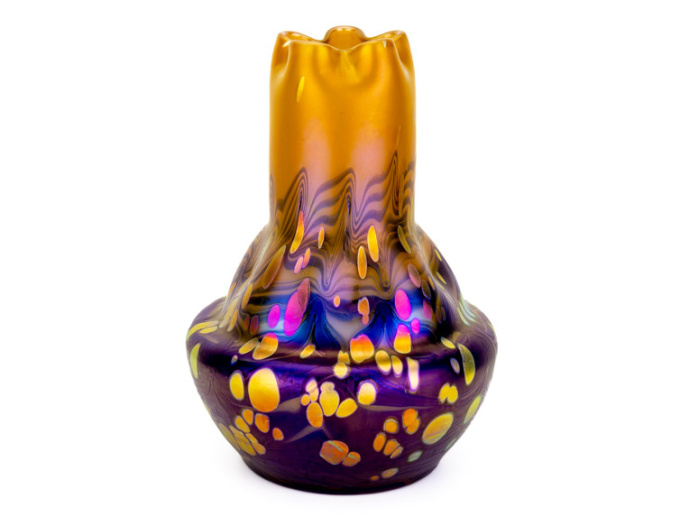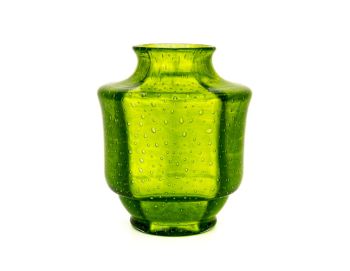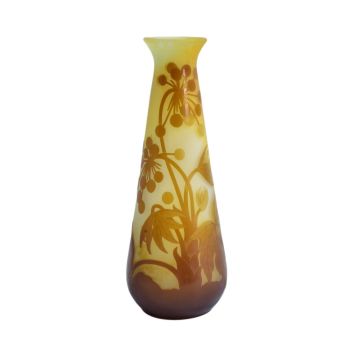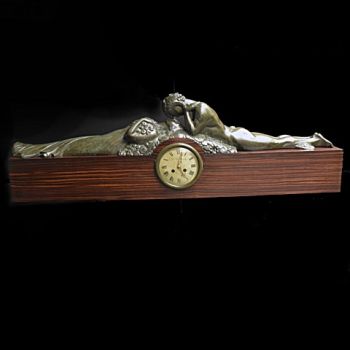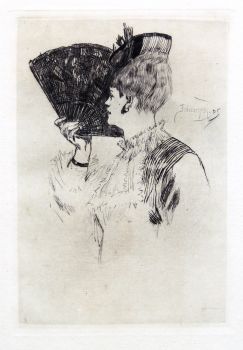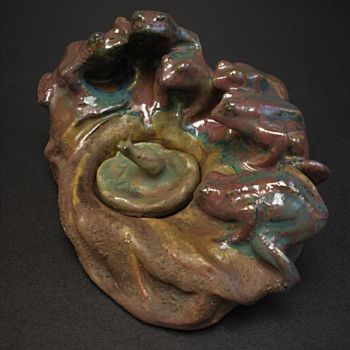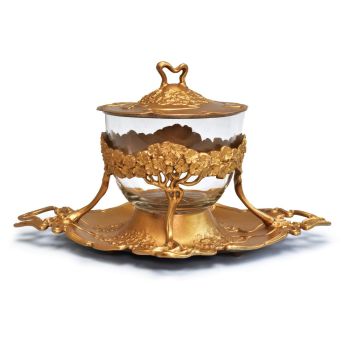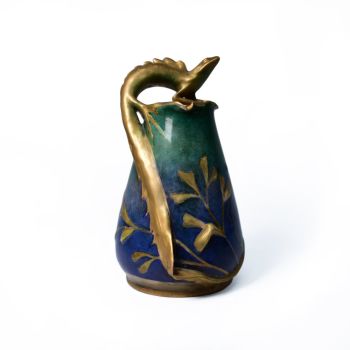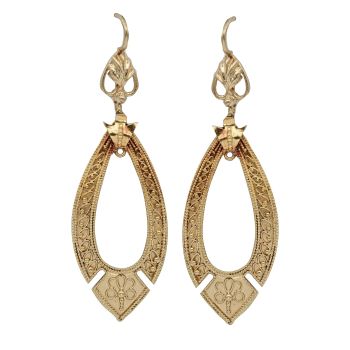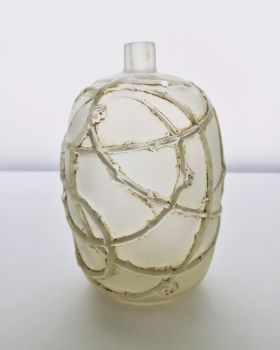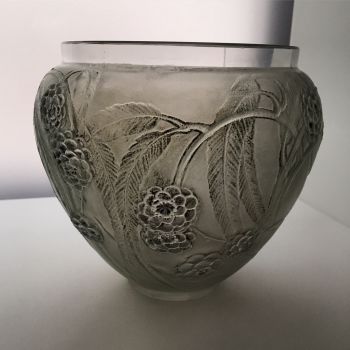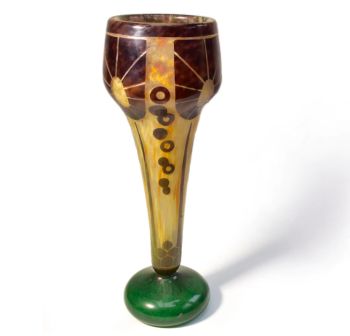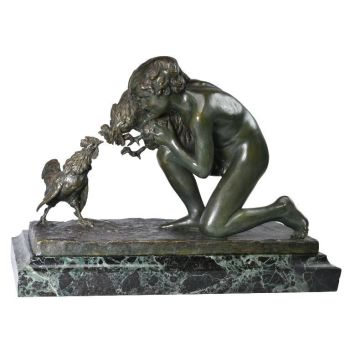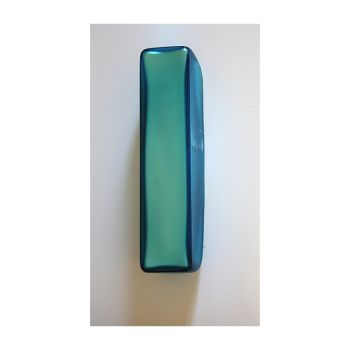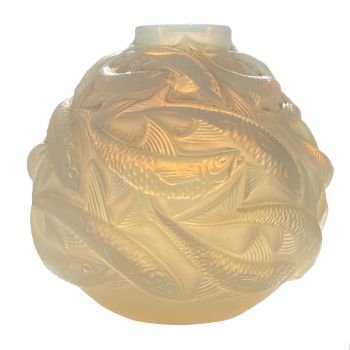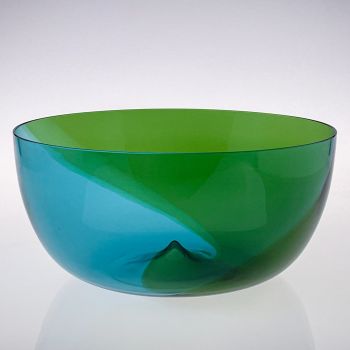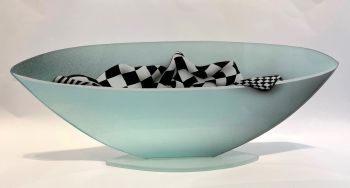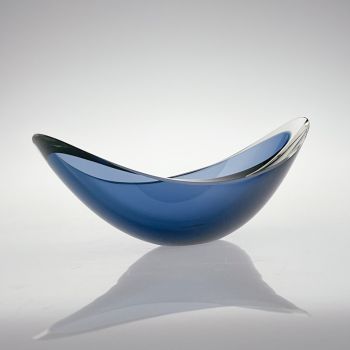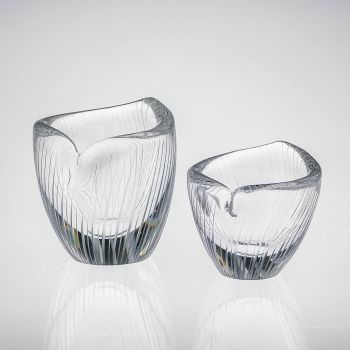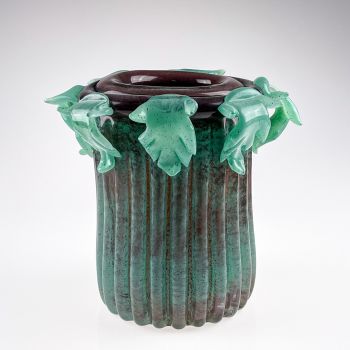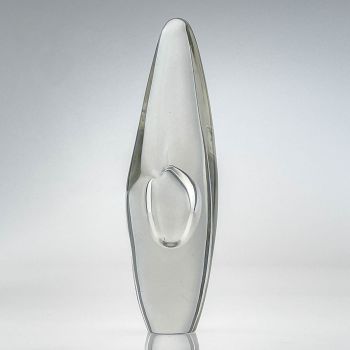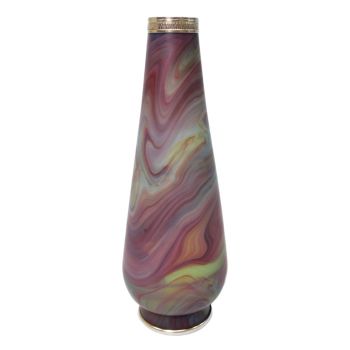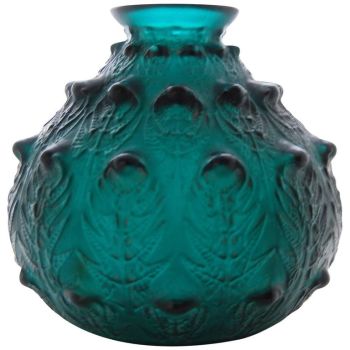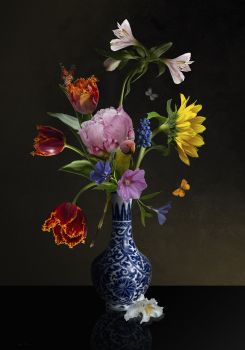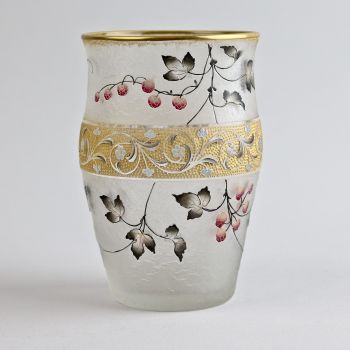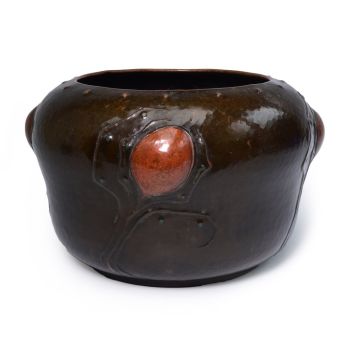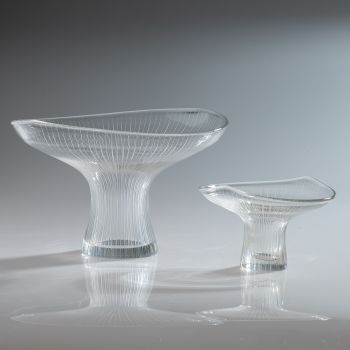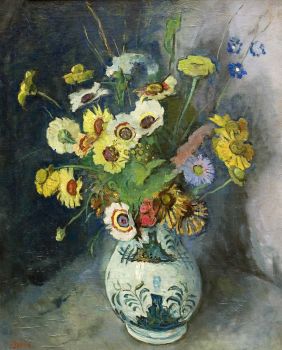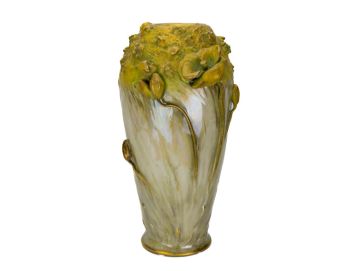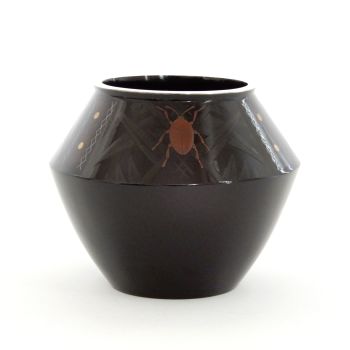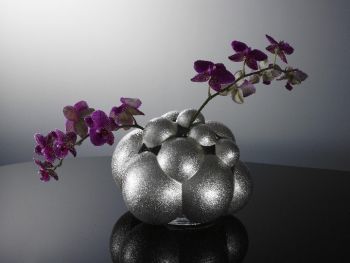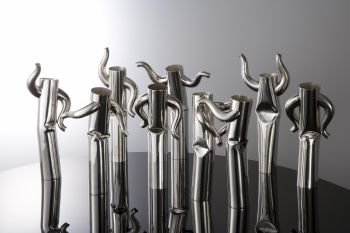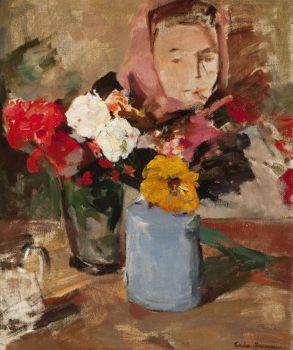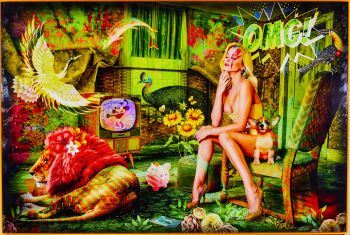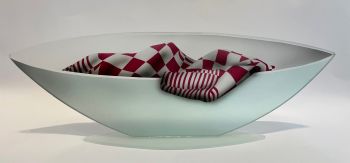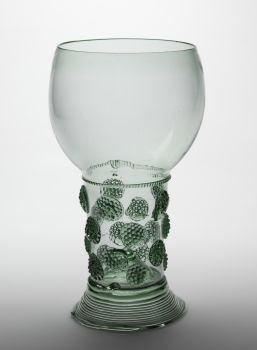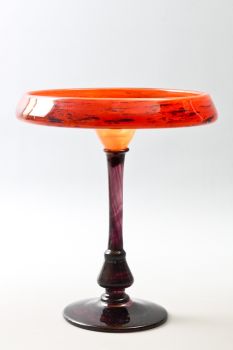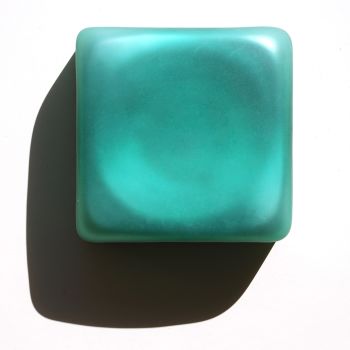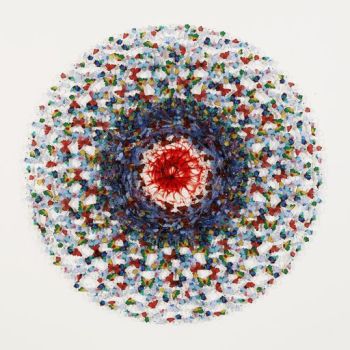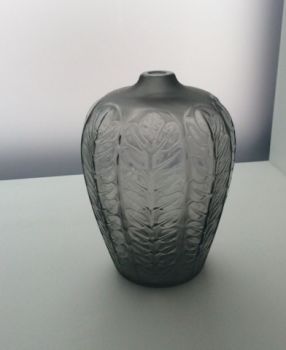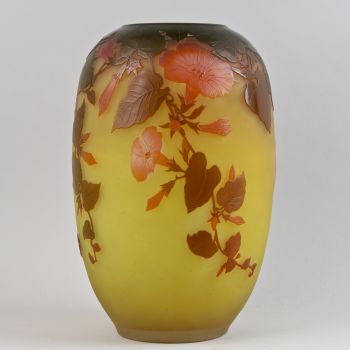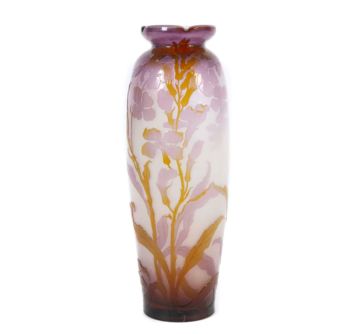Johann Loetz Witwe – Jugendstil vase in Cytisus Neurot decor 1900 - 1910
Johann Loetz (Lötz) Witwe Klostermühle
Copo
21 ⨯ 16 cm
ConditionMint
Atualmente indisponível via Gallerease
- Sobre arteThe complex organic shape of this vase produced by the Johann Loetz Witwe company is characteristic of the designs just after the great success at the World Exhibition in Paris in 1900. The Loetz decor Cytisus is very refined and artistic and shows how exceptional the quality of the productions of Johann Loetz Witwe in this period were.
This Cytisus vase is executed in ground color “Neurot” and has randomly drawn in a wave pattern blue threads of glass with iridescent dots. The complex organic shape and the indentations on the body show that this object was very artfully free-formed by the glassblower. - Sobre artista
A vidraria Loetz existiu em Klostermuhle, Áustria, por pouco mais de cem anos, começando em 1840. Mas seu apogeu foi durante a vida de Max Ritter Von Spaun, neto do original Johann Loetz que fundou a empresa.
Von Spaun assumiu a empresa em 1879 e a dirigiu até 1908, um ano antes de sua morte. Ele foi auxiliado por Eduard Prochaska, seu especialista técnico, e juntos eles inventaram, projetaram e produziram uma série de novos e maravilhosos tipos de vidro, tirando várias patentes e ganhando prêmios em todas as maiores exposições mundiais durante a década de 1890 e os primeiros anos de o novo século.
A empresa Loetz estava entre os líderes em design Art Nouveau e especialmente em vidro de arte irridescente. O vidro "Papillon", como o vaso à esquerda, é às vezes conhecido hoje como vidro "manchado de óleo". Outro colorante favorito de Loetz era o vidro irradiado com trilhas puxadas, chamado de vidro "Fenômeno".
Havia vasos irritados com fitas de cores metálicas enroladas na superfície, e muitos desenhos espetaculares com rastros aplicados de belas cores, ou simplesmente puxados para fora do corpo do vidro para formar alças ou decoração.
Por volta de 1900, a empresa começou a colaborar com designers externos, e alguns grandes artistas criaram peças para Lotz, notavelmente Joseph Hofmann, Koloman Moser, Maria Kirchner e Hofstatter.
Em 1908, Loetz foi adquirido pelo filho de Max Von Spaun, também chamado de Max, e embora tivesse dificuldades financeiras (indo à falência em 1911 e novamente em 1931), havia vários grandes designers cujo trabalho foi produzido por Loetz durante aqueles anos e através da arte período deco. Entre eles, Adolf Beckert e Michael Powolny.
Artwork details
Related artworks
Johann Loetz (Lötz) Witwe Klostermühle
Johann Loetz Witwe - Phänomen Genre 7773 – Orange1900 - 1910
Preço em pedidoAntiques Emporium
1 - 4 / 8- 1 - 4 / 24
- 1 - 4 / 24
René Lalique
Um vaso "Fougeres" verde profundo muito raro projetado por R. Lalique1912
€ 8.950Lennart Booij Fine Art and Rare Items
 Com curadoria de
Com curadoria deSilla Scheepens
Artista Desconhecido
Japanese art deco lacquervase with Scarab beetle motif1920 - 1950
Preço em pedidoDille Art
1 - 4 / 24Johann Loetz (Lötz) Witwe Klostermühle
Johann Loetz Witwe - Phänomen Genre 7773 – Orange1900 - 1910
Preço em pedidoAntiques Emporium
Amalric Walter
Amalric Walter & Henri Bergé – Crabe plumier1920 - 1929
Preço em pedidoAntiques Emporium
1 - 4 / 24

